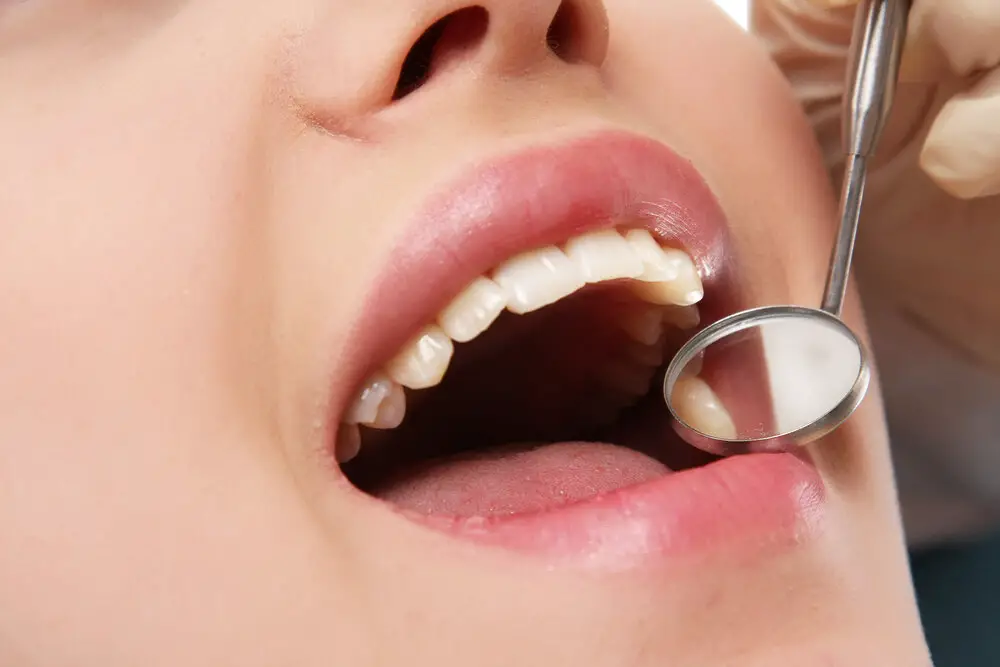Why Does the Tooth Fairy Collect Teeth? Unraveling the Fascinating Myth and Historical Origins

The Tooth Fairy is a beloved childhood figure that has been celebrated for generations. She is often portrayed as a tiny, winged creature that glides into children’s bedrooms at night, collecting their lost teeth in exchange for a small gift or a bit of money. But have you ever stopped to wonder where this myth originated, and why the Tooth Fairy is so fixated on collecting teeth?Unraveling the fascinating myth and historical origins of the Tooth Fairy sheds light on the cultural significance of this beloved figure. It provides insight into the ways in which we pass down traditions and beliefs from generation to generation, and how these beliefs can evolve over time. From ancient Norse mythology to modern-day Western culture, the Tooth Fairy has taken on many different forms and meanings, making her a fascinating subject of study for anyone interested in folklore and cultural history.
The Origin of the Tooth Fairy

The Tooth Fairy is a beloved mythical figure that has been a part of many cultures for centuries. Although the origins of the Tooth Fairy are not entirely clear, it is believed to have originated in Europe, where it was customary for parents to bury their children’s baby teeth. This tradition was believed to help protect the child from evil spirits and promote the growth of new teeth. Over time, the Tooth Fairy evolved into a more magical creature that would leave a small gift or payment in exchange for the lost tooth. In the United States, the Tooth Fairy became a popular figure in the early 20th century. In 1927, Esther Watkins Arnold wrote a play called \The Tooth Fairy,\ which popularized the idea of a fairy who collects children’s teeth. The play was widely performed in schools and helped to spread the Tooth Fairy myth throughout the country. Today, the Tooth Fairy is a beloved tradition in many households, and children eagerly anticipate the arrival of the magical creature to collect their lost teeth.
Folklore and beliefs vary greatly across different cultures, often reflecting the unique perspectives and values of a particular society. For instance, in some cultures, the idea of the tooth fairy is replaced by other mythical creatures, such as the tooth mouse or tooth worm. In other cultures, teeth are believed to possess magical qualities and might be used in traditional medicine or as a form of currency. These beliefs often stem from deeply ingrained cultural norms and practices, and can serve as a fascinating window into the history and traditions of a people. Whether it’s the tooth fairy or other myths and legends, the stories we tell and the beliefs we hold are an integral part of our shared human experience.
The Tooth Fairy myth has evolved over time, taking on different forms and meanings across cultures and generations. In ancient times, lost teeth were often buried to prevent evil spirits from using them to gain power over the child. Later, in Europe, the tooth mouse became a popular figure, who would exchange a coin for a child’s lost tooth. In the United States, the modern Tooth Fairy emerged in the 20th century, likely influenced by the popularity of fairies in literature and art. Today, the Tooth Fairy is often depicted as a magical creature who collects teeth in exchange for money or gifts, providing comfort to children as they experience the physical and emotional milestones of growing up. Despite its many iterations, the Tooth Fairy remains a beloved and enduring myth in cultures around the world.
The Tooth Fairy in Popular Culture

The Tooth Fairy is a beloved and ubiquitous figure in popular culture, appearing in countless books, movies, and TV shows. The origins of this myth are somewhat murky, but it is generally believed to have originated in Northern Europe in the Middle Ages. In those times, people believed that witches could use discarded body parts, including teeth, to cast spells. To prevent this from happening, parents would burn teeth, bury them, or throw them into a river. Eventually, this practice evolved into the idea of a benevolent fairy who would collect the teeth and leave a small gift in return. Today, the Tooth Fairy is a staple of childhood, and many parents use it as a way to help their children cope with the loss of baby teeth. Despite its origins in superstition and folklore, the Tooth Fairy has become a beloved and enduring figure in popular culture. From movies like The Tooth Fairy and Rise of the Guardians to children’s books like Dear Tooth Fairy and The Berenstain Bears and the Tooth Fairy, the Tooth Fairy has been the subject of countless stories and representations. In addition to inspiring fiction, the Tooth Fairy has also become a popular subject for art, with many artists creating whimsical and magical depictions of the fairy in various settings. Whether you believe in the Tooth Fairy or not, there is no denying the enduring appeal of this charming and magical figure.
The Tooth Fairy has become a beloved character in children’s stories due to its whimsical and enchanting nature. The Tooth Fairy is a symbol of childhood innocence and wonder, and it provides children with a sense of comfort during a time of physical and emotional change. The idea of a magical creature visiting children in the night to collect their lost teeth and leaving behind a small reward is a charming and captivating concept that has captured the hearts of generations. The Tooth Fairy has also become an important part of cultural traditions and folklore, with different variations and interpretations found in various regions around the world. Overall, the Tooth Fairy has become an enduring and beloved character in children’s stories due to its enchanting and comforting nature.
Depictions of the Tooth Fairy in popular media have varied greatly over time. In early depictions, she was often portrayed as a small, winged creature with a happy, almost childlike demeanor. However, more recent portrayals have tended towards a more glamorous and sophisticated interpretation, complete with designer clothing and a posh accent. Despite these variations, the core concept of the Tooth Fairy remains the same – a benevolent entity that collects children’s teeth and leaves a small token of appreciation in return. Interestingly, while the Tooth Fairy may seem like a purely modern invention, the concept of a tooth-collecting fairy has roots that stretch back centuries, making it a truly fascinating and enduring myth.
The Significance of Teeth in History and Culture

Teeth have played a significant role in history and culture across the globe. In ancient times, teeth were used to determine one’s age, gender, and even social status. For example, in ancient Egypt, wealthy individuals would have their teeth replaced with ivory or gold to signify their wealth and power. In some cultures, teeth were extracted as part of a rite of passage or initiation ceremony, marking the transition from childhood to adulthood. Teeth were also important in the field of medicine, with dentistry having roots dating back to ancient civilizations such as the Indus Valley and ancient China. In addition to their practical uses, teeth have also played a significant role in myth and folklore. For example, the tooth fairy, a popular figure in Western culture, is said to collect children’s teeth in exchange for money or gifts. This tradition has its roots in European folklore, where it was believed that witches could gain power over individuals by obtaining their teeth. In other cultures, teeth were believed to hold magical powers, with the teeth of animals such as lions and tigers being highly prized for their supposed ability to grant strength and courage to those who possessed them. Overall, the significance of teeth in history and culture is a testament to their importance and enduring fascination.
Teeth have played a significant role in various ancient rituals and traditions across cultures worldwide. In some cultures, teeth were considered a symbol of power, strength, and fertility, and were often worn as ornaments. In other cultures, teeth were believed to possess magical properties and were used in various forms of spell-casting and divination. Additionally, many ancient cultures believed that teeth held the essence of a person’s soul and were used in burial rituals as a means of ensuring that the soul would be protected in the afterlife. Despite the cultural differences, teeth have always held a special significance in ancient rituals and traditions, and their importance continues to be recognized today.
Throughout history, teeth have been considered a symbol of wealth, power, and status. In many ancient cultures, such as the Mayans and the Vikings, dental modifications and adornments were reserved for the elite class. Having teeth that were filed, inlaid with precious stones, or even replaced with gold teeth signified one’s status and prestige. Additionally, having a full set of healthy teeth was indicative of good health and well-being, which further elevated one’s social standing. Today, while dental modifications are less common, the association between teeth and status remains. A bright, white smile is often viewed as a sign of success and attractiveness in many cultures, further cementing the notion that teeth are a symbol of wealth and power.
The science of teeth has come a long way in modern times, with dentistry being a crucial aspect of oral health. Teeth are essential for biting, chewing, and speaking, and their proper care is vital for overall health. The enamel on teeth is the hardest substance in the human body, and teeth also contain nerves, blood vessels, and connective tissue. Dental problems such as cavities, gum disease, and tooth loss can have severe consequences for overall health, including malnutrition, infection, and even heart disease. Therefore, taking care of teeth through proper hygiene and regular dental check-ups is crucial in modern times.
The Fascinating Reasons Behind Tooth Collection

The tradition of tooth collection by the Tooth Fairy is thought to have originated from ancient European folklore. The belief was that when a child lost their baby teeth, they were at risk of being possessed by evil spirits. To ward off these spirits, parents would bury the teeth in the ground or burn them. Over time, this practice evolved into the idea of tooth collection by a magical creature, the Tooth Fairy. The Tooth Fairy would collect the teeth and leave a small gift or money in exchange. Today, this tradition is still popular in many parts of the world, and children eagerly await a visit from the Tooth Fairy when they lose their teeth. In addition to the folklore origins, there may be a more practical reason for tooth collection. Baby teeth are a valuable source of stem cells, which can be used in medical treatments. Stem cells are unique in their ability to develop into various types of cells, making them essential in regenerative medicine. By collecting baby teeth, scientists can harvest stem cells that could potentially be used to treat diseases and injuries. While this may not be the reason behind the Tooth Fairy tradition, it highlights the fascinating potential of something that was once thought to be just a childhood myth.
Scientifically and medically speaking, the Tooth Fairy myth has served as an important tool for studying human growth and development. Children’s teeth are valuable sources of stem cells, which can potentially be used to treat a variety of diseases and injuries. Additionally, studying the patterns of tooth loss in children can help researchers better understand the timing and progression of dental development. Furthermore, the Tooth Fairy can also serve as a means of encouraging good dental hygiene habits in children, which can promote better oral health and prevent future dental issues. Overall, while the Tooth Fairy may be a fanciful myth, it has important implications and applications in the fields of science and medicine.
Superstitions and beliefs have been a part of human culture for centuries. From the ancient belief in gods and goddesses to modern-day superstitions like throwing salt over your shoulder, people have always looked to the supernatural to explain the unexplainable. The tooth fairy is just one example of a widely believed myth that has been passed down through generations. While the origins of the tooth fairy are unclear, the ritual of leaving a tooth under a pillow in exchange for a small reward has become a beloved tradition in many cultures. Despite the lack of evidence supporting the existence of the tooth fairy, the belief persists, offering children a sense of wonder and magic in a world that can often feel mundane.
The Tooth Fairy is a beloved character that has been enchanting children and adults alike for generations. For many, the Tooth Fairy holds personal and sentimental value, as it marks a significant milestone in a child’s life. Losing a tooth can be a scary experience for children, but the idea that a magical creature will come and collect the tooth, leaving a small token of appreciation, can help ease their fears. Additionally, the tradition of the Tooth Fairy can bring back nostalgic memories for adults who remember the excitement and wonder of losing a tooth and receiving a small gift in return. Overall, the Tooth Fairy is a cherished part of many people’s childhoods and a symbol of innocence and magic.
The Tooth Fairy is a beloved childhood myth that has fascinated generations of children all over the world. The origins of this magical creature can be traced back to ancient European folklore, where it was believed that children’s teeth had mystical powers that could protect the child from harm. Over time, this belief evolved into the Tooth Fairy we know today, with its cultural significance now extending beyond Europe to include countries like the United States and Australia. The Tooth Fairy’s tooth collection practices also vary across cultures, with some children leaving their teeth under their pillow, while others place them in a special dish or box designated for the Tooth Fairy. Despite its many variations, the Tooth Fairy remains a beloved childhood tradition that continues to capture the imagination of children and adults alike.
The Tooth Fairy myth has been a beloved tradition for generations, captivating the imaginations of children all around the world. Its continued relevance today can be attributed to its ability to provide comfort and excitement during a childhood milestone. The Tooth Fairy’s role in rewarding children for losing their baby teeth also serves as a positive reinforcement for good oral hygiene habits. Additionally, as the myth has evolved over time, it has become a way for families to bond over shared experiences and create lasting memories. Despite its fantastical origins, the Tooth Fairy continues to hold a special place in the hearts of both children and adults alike.
Conclusion

In conclusion, the Tooth Fairy is a fascinating myth with historical roots that date back centuries. While the origins of the Tooth Fairy are varied and complex, the underlying idea of a magical being collecting teeth and leaving rewards behind is a universal concept that has captured the imaginations of people around the world. From Norse mythology to modern-day pop culture, the Tooth Fairy continues to captivate and intrigue both children and adults alike. Whether you believe in the Tooth Fairy or not, it is undeniable that this enchanting myth has stood the test of time and will likely continue to do so for generations to come.






